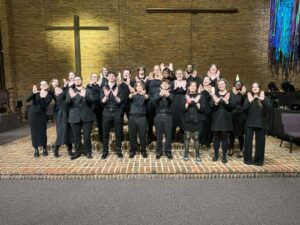During Martin Luther King, Jr. Day, several workshops were held on campus that followed the theme of diversity and civil rights in America. These workshops were sponsored by CBS and the Diversity Advisory Committee and took place in Hollenbeck and Zimmerman Halls.
One such workshop was presented by Communication professor and social media expert Kelly Dillon. The workshop was titled “The Media’s Role in the Fight for Civil Rights.” Dillon compared the media’s role in the civil rights’ movements of the 60s and today, showing the ways that media shapes American culture.
The civil rights’ movements today look like those of the 60s, but have evolved to a greater movement of equality for more groups of minorities.
“It’s beyond racial civil rights now,” Dillon said. “It’s intersectional; we do not have just one identity…women of color, trans individuals of color, do have greater hurtles.”
Much of our understanding of the world around us comes through the lens of what we see on social media or the news. Our perceptions of gender, race, violence and many other topics can be largely cultivated by what media show us regarding those topics, as well as how media frame topics or events.
Newspapers, TV news and photojournalism were all instrumental in influencing people’s perceptions of the civil rights’ movements in the 60s. Today, social media has become one of the largest disseminators of information, especially as it allows individuals who are not connected to a news organization to share information in their own way. Social media also lets individuals respond to what they see on the news, through posts and trending hashtags.
Dillon closed her presentation by urging the students to “think before you create, and think before you click, before you share, and understand that you are all, whether you like it or not, a part of the current civil rights movement.”







